Hyundai's EV Range Reign to Prove Short-lived in Europe
Hyundai’s front-drive Kona Electric began appearing on Norwegian streets back in August, slowly proliferating to other European countries ever since. Backing up the model was its enviable status as the longest-range EV on the market.
Using the new Worldwide Harmonised Light Vehicle Test Procedure (WLTP), testers rated the Kona EV’s range at 292 miles, more than enough to travel between tightly spaced European cities. Now, the vehicle faces a double blow of bad news. First, the testers got the test wrong, and second, a new Tesla his poised to arrive on the east side of the Atlantic.
Battery Prices Likely Heading for the Ceiling After Congo Raises Royalty Rate
The Democratic Republic of Congo has declared cobalt a “strategic” substance, nearly tripling the royalty rate miners will have to pay on it. According to a governmental decree, miners will now pay 10 percent in royalties to extract the element.
While we’ve previously warned of the likelihood of a global supply shortage elevating the price of batteries, it seems this will occur only after the Congo taxes the crap out of it. This is the second time cobalt has seen a royalty hike since June, when the region increased the previous 2 percent royalty to 3.5 percent.
Besides the looming prospect of a reversal in the falling price of EV batteries, a spike in the price of cobalt is already ruffling some feathers.
The Government's Coming for Your Classic Car, but They Can't Take It All: Aston Martin CEO
Aston Martin CEO Andy Palmer isn’t very trusting of his government’s plan to ban all internal combustion vehicles by 2040. The 55-year-old Brit had a few things to say about the UK’s intentions last year, none of them very kind to policy makers.
Since then, it seems he’s grown even more concerned about the legions of old Astons prowling the carriageways of his fair country. With this in mind, the automaker developed a way to “future-proof” emissions-spewing classics and keep them from becoming illicit Red Barchettas sought out by agents of a puritan superstate. You’ll have to hand over your inline-six or V8 first, but don’t worry — you can put it back.
The End of the Line for Internal Combustion Volkswagens?
Certain green-tinged websites would sure want you to believe it. At the Handelsblatt automotive summit in Volkswagen’s home base of Wolfsburg, Germany this week, VW strategy chief Michael Jost etched a tombstone for the internal combustion engine.
But is the coming decade really the last one to feature VWs with exhaust pipes?
White House Wants to End EV Subsidies ASAP
White House economic adviser Larry Kudlow announced Monday that the Trump administration is seeking an end to federal subsidies on electric cars. Interestingly, the move appears to be related to General Motors’ plant closings and layoffs. The company’s restructuring plan hasn’t gone over well with policy makers or the American public, with many accusing the automaker of abusing years of tax breaks, only to reduce its workforce as a way of pursuing new technologies, businesses, and further bolstering its profit margins.
However, cutting GM out of the electric vehicle subsidies deal is more likely to impact its rivals than anything else. The company said it’s on the cusp of the EV tax credit ceiling already, with the gradual phase-out of those incentives likely to take place through 2019. Yet Kudlow pointed to the elimination of the credits as one way of punishing GM for eliminating so many jobs, echoing President Donald Trump’s threats from last last week.
“As a matter of our policy, we want to end all of those subsidies,” Kudlow explained. “And by the way, other subsidies that were imposed during the Obama administration, we are ending, whether it’s for renewables and so forth.”
Audi Pulls the Sheet Off E-tron GT Concept in LA
After some healthy automotive foreplay, Audi finally took the wraps off its new e-tron GT Concept at the LA Auto Show. Offering the best elements of the brand’s design language, the vehicle previews a production model that’s scheduled to appear late in 2020, as well as Porsche’s upcoming Taycan EV — which will share the Audi’s drivetrain and platform.
Relatively handsome, if you like Audi sedans and oversized grilles on electric cars, the GT avoids getting overly ambitious with the futuristic styling we see on a lot of mainstream EVs. We’d call this “extremely modern” rather than some truly visionary design you’d expect from a concept car. It’s safe but not so safe that anyone should be left fretting.
However, it’s not quite the Tesla destroyer the media is eternally hunting for. Despite boasting some impressive specifications, the e-tron is roughly on par with the Model S when viewed broadly. But it should still make for healthy competition while encouraging the American brand to step up its game.
Volkswagen Trademarks Some Unambitious Car Names
Volkswagen Group has been hyping its upcoming all-electric lineup for a while, with the Type 2-inspired Buzz Concept serving as an impromptu mascot for the company’s new I.D. brand. However, we had hoped VW would rename some of the concepts once production models hit the scene, maybe even tapping into its heritage. While the I.D. Buzz, Crozz, and Vizzion provide a cohesive naming strategy, we’ve heard better automotive handles before.
It seems as if the automaker is inclined to agree. Unfortunately, rather than come up with a new set of names, Volkswagen appears to be trademarking a series of alphanumeric titles. We’re not going to pretend that VW has the best-named lineup in the industry but it would have been nice to see them try something new, rather than fall into the same trap nearly every other premium nameplate and EV manufacturer has.
Hyundai Reassures Dealers as Battery Shortage Adds Dark Clouds to Kona Electric Launch
By all accounts, the Hyundai Kona Electric is a zippy little crossover endowed with surprising range and the same basic utility as its gas-powered sibling, minus the whole all-wheel drive thing. However, a battery shortage afflicting the Korean automaker has added uncertainty to a model arriving on American shores this year.
Will it actually show up when a customer wants one?
Don’t worry about that, Hyundai’s telling dealers. There’s a plan to get Kona Electrics to America.
Invisible Markets: Mercedes-Benz Launches Hydrogen-powered GLC F-Cell
Mercedes-Benz says it has begun deliveries of the GLC F-Cell, a battery-electric vehicle that can run on hydrogen or a stored electrical charge. That would make it the most sensible hydrogen vehicle currently in existence, which isn’t saying much.
At any rate, it doesn’t really matter because you’ll probably never see one.
Volkswagen Has a Low-priced EV Plan to Keep Rivals At Bay: Report
Volkswagen doesn’t want competitors unsurping its electric car efforts, so there’s a plan afoot to give buyers what they want at a much lower price, sources claim. Two reports, citing those with knowledge of a strategy not yet approved by the automaker’s supervisory board, state the company plans to go cheaper than its upcoming line of I.D.-badged EVs.
How cheap, you ask? How about $21,000?
Ad Cops Slap Nissan for Potentially Misleading Charging Info
The UK’s Advertising Standards Authority (ASA), like the fictional “phone cops” of WKRP fame, seem to be everywhere in that country, keeping tabs on everyone’s every move. As we told you last month, in the UK, commercials are not even allowed to show frustrated office workers getting behind the wheel of a Ford Mustang, even if they’re shown driving sedately once the car leaves the garage. Dangerous influences lurk everywhere.
Britain’s ad cops are at it again, only this time there’s some meat on the bones of the complaint. Automakers often play fast and loose when it comes to describing the capabilities of autonomous vehicle functions, but electric vehicles are another area fraught with potential misleading info. Throw pricing and fuel economy into that group, too. Nissan recently ran afoul of ASA watchdogs after one of its ads suggested owners could partly recharge their vehicles in a hurry. Of course, this is technically a true statement.
What resulted was essentially a battle over the word “could.”
Range Anxiety: Real-world Testing Shows EV Winners and Losers
Much like with gasoline-powered vehicles, just how far you’ll travel in an electric car before your “tank” runs dry depends on driving style and the peculiarities of your chosen route.
A British publication has now put a range of electric vehicles, most available (or soon to be available) in the U.S., through their paces, reporting back on whether owners can expect to recoup every last mile promised by the manufacturers and the EPA. Your mileage may indeed vary.
Volkswagen Might Put Audi on the Back Burner, Spend More Time With Ford: Report
According to sources who spoke to Reuters, Volkswagen Group has more interest in pursuing technological relationships with new partners, especially Ford, than continuing on with Audi as its main development hub. At least for a while.
VW CEO Herbert Diess will reportedly unveil a 10-year plan to his company’s board later this month, part of an efficiency initiative born of diesel fines and the need to stay ahead of rivals. While the move would lessen Audi’s importance in the group, VW would stand to save big on R&D costs. Meanwhile, Ford might get access to VW’s electric vehicle architecture.
Dealer Association Chair: Relax, Critics - Electric Car Owners Still Have to Visit the Shop
National Automobile Dealers Association chairman Wes Lutz doesn’t have much time for critics who claim traditional car dealers don’t want to sell you an electric vehicle. As EVs boast fewer moving parts and lower running costs, green car advocates often say dealerships view the vehicles as a threat to a business model that relies heavily on service visits for profit.
Not so, says Lutz. The parts that do move are the ones they profit from.
Hyundai, Kia Aiming for Solar Roofs Starting in 2019
Imagine a parked vehicle that slowly sucks dino juice from vast, underground deposits through its tires. That’s essentially what Hyundai Motor Group wants to do with its vehicles, the only difference being the energy source and the direction it’s coming from.
Despite being talked about for years, solar roofs on automobiles haven’t seen widespread adoption. Cost, practicality, and rollover safety concerns mean the largest user of the technology is the Japanese and European-market Toyota Prius Prime. Now, Hyundai wants to go solar in a big way, starting next year.
The automaker wants buyers to know that solar roofs aren’t useless for regular, gas-swilling vehicles, either.
Gas-guzzling Former Roommates Poised to Become Eco Rivals
For nearly five decades, Rolls-Royce and Bentley shared the same bed, then lived amicably under the same roof for another 18 years, becoming ever closer to each other due to dwindling shared finances. Then two Germans showed up and they parted ways, forever.
While still representing the richly browned upper crust of British motoring, the two brands have maintained fairly similar development paths, launching sedans, coupes, and now SUVs in quick succession of each other. Now, because green types look down on ornate, porky, roadgoing behemoths powered by gas-swilling eight- and twelve-cylinder engines, both brands have decided to embrace the environmental movement.
Naturally, news of these tentative electric product plans hit the presses almost simultaneously.
One of the Market's Least Expensive EVs Is Due for a Range Bump
Happen across a Hyundai Ioniq in your daily travels, and it’ll almost inevitably be a hybrid or plug-in hybrid model, not the fully electric variant. That’s because, unless you live in California, the Ioniq Electric is off limits. For now.
With a range that might have once impressed and an entry price starting below $30,000 before government incentives, the Ioniq Electric is an affordable five-door for those who aren’t concerned about brand snobbery or lengthy road trips. Still, Hyundai knows that models that don’t compete, don’t sell. That’s why the little hatch will soon be able to go further on a tank of charged particles.
Pricier Chevrolet Bolt, Volt Loom as GM Nears Tax Credit Threshold
It looks like General Motors won’t enjoy its tax incentive advantage over Tesla for all that long. The maker of the Chevrolet Bolt EV and Volt plug-in hybrid (“extended-range EV,” in GM parlance) told Green Car Reports it will pass the 200,000-unit green vehicle threshold this quarter, meaning a halved federal tax credit for those vehicles starting in April of next year.
No longer will the base Bolt sticker for under $30,000 after factoring in the $7,500 credit.
Going Coastal: GM Calls for Nationwide Zero-emission Vehicle Strategy
General Motors CEO Mary Barra took to the USA Today op-ed page Friday to advocate for a national zero-emission vehicle strategy — NZEV, for short. The automaker is calling for the ZEV program already in effect in California and nine other states to become law across the United States, thus making it mandatory for OEMs to field a certain number of electric and plug-in hybrid vehicles, or pay a price.
Were the proposal to became the law of the land, you can only imagine the reaction from Ford’s rival in Auburn Hills.
Volkswagen Wants the World to Buy Like Americans
The world needs to adopt North America’s penchant for high-riding SUVs if Volkswagen has any hope of building a clean, green, safe future for your kids. That’s basically the message coming from the automaker, which wants 50 percent of its global product mix to be made up of crossovers and SUVs by 2025.
High-margin SUVs will bolster the brand’s business, the company says, helping bring in the cash needed to eventually take your internal combustion engine and steering wheel away.
Smart Brand in Danger, Report Claims
Pick your jaw up off the floor. The Smart brand, officially spelled with a lowercase “s” that we can’t abide by, is now 20 years old, but seems destined to leave this earth before it has to start worrying about the big three-oh.
Smart’s development partner, Renault, is reportedly entertaining thoughts of leaving the relationship, opening the door to Smart’s death… or substitution.
Sorry, Britain: Vacuum Tycoon Decides to Build Dyson EVs in Singapore
British vacuum magnate James Dyson has decided to construct his company’s planned electric vehicles in Singapore, rather than his home country. The choice prompted a mild uproar in the UK, as Dyson was a major proponent of Brexit.
However, he’s also still a businessman. China currently buys more EVs than any other nation on the planet, a fact that’s unlikely to change any time soon, and it’s typically more affordable to manufacture there than risking importation. This is especially true of automobiles. Officially, Dyson has said his business’ “center of gravity” has begun shifting toward Asia, accounting for nearly three quarters of the company’s revenue growth last year.
C’est la vie, as the British say.
Germans Poised to Earn Money by Owning a Nissan Leaf
With governments everywhere attempting to reduce powerplant emissions while simultaneously moving the teeming masses out of ICE vehicles and into electric cars, an energy brick wall quickly approaches. You’re faced with a situation where more people are drawing more power from the grid, but — for environmental or financial reasons — generating more power is out of the question.
In Germany, one solution is to get those EV drivers to stop what they’re doing and plug back into the grid, allowing the contents of their just-filled batteries to flow back into the plug it came from. Goodbye, brownouts. Possibly. If the solution seems odd and potentially self-defeating, it is, but the country’s government just approved the Nissan Leaf for exactly this use.
The Cost of Going Further: Long-range Nissan Leaf Carries a Premium, Has Sights Set on GM
Nissan did Leaf fans a favor when it upped the model’s driving range to 151 miles for 2018, a healthy increase from the previous generation’s 107 miles. Still, 151 miles falls well short of the industry’s nice-sounding gold standard of 200 miles — the figure to beat (or at least reach) for most automakers. With range like the new Leaf’s, long-distance travel remains complicated, inconvenient, and perhaps even impossible.
It’s no secret that Nissan plans to offer an upgraded battery next year, but just how much extra cash you’ll need for that 60 kWh model remained a mystery. Until now.
Unlike Some Automakers, BMW's Keeping Its Visions of the Future in (Very) Low Earth Orbit
A big question mark hanging over the auto industry concerns the rate of electric vehicle adoption, but BMW — unlike some of its rivals — isn’t prone to wild predictions about the public’s enthusiasm for clean, green EVs.
Despite rolling out a global plan earlier this year for 25 plug-in hybrid or electric vehicles by 2025, the automaker knows customers won’t abandon their love of inline sixes and turbo fours just because a big battery batted its eyelashes. It’s keeping diesels around, too. Those other guys, the company’s R&D chief implies, just don’t know how to make them right. And politicians are being unfair.
As for EVs, too many people have unrealistic expectations, he adds.
China's NIO Sold 3,268 Autos Last Quarter, Most of Them Last Month
Nio, originally launched as NextEV in 2014, announced that it had delivered 3,268 electric SUVs in the third quarter of 2018. Not only does this beg the question of when Nio swapped from Formula E and electrified hypercars to utility vehicles, but it also makes us wonder how a burgeoning EV firm managed to surpass production goals. Aren’t all zero-emission automobiles that aren’t developed by established automakers supposed to languish in purgatory?
Answering the first question is easy. Nio started deliveries of the ES8 crossover last June, though it still sells the high-performance EP9 for $1.2 million. We doubt that model provided any significant contributions to overall volume in Q3. The trickier bit of this equation is figuring out how the Nio moved all that metal. While 3,200 cars is a paltry some for a mainstream manufacturer, it’s pretty damn good for a company that just started building a volume electric. Even Tesla would have been envious in 2012.
Porsche's Greenest Buyers Might Get a Chance to Go Partially Topless: Report
Porsche’s Taycan, a slinky electric sedan that used to carry the Mission E moniker, is only a starting point for the German performance brand. Several EVs are sure to follow that model’s 2019 debut, a couple of which saw light shed on them last week.
For the Taycan, it seems Porsche has plans to instill a little 911-themed heritage into its green car flag-bearer, starting with the car’s roof.
2019 Hyundai Kona Electric First Drive - Worthy Competition
Until recently, anyone wanting a purely electric vehicle capable of driving beyond the confines of a daily commute was stuck shelling out the big bucks. Then Chevrolet introduced the Bolt in 2016, proving that 200+ miles of range wasn’t out of the question. With most EV competitors achieving just over half that, it seemed like it might be awhile before we saw another mainstream nameplate surpass that achievement.
Keen to one-up the Americans (even though the Bolt was technically developed by GM Korea), Hyundai has come forward with the 2019 Kona Electric. This subcompact crossover replaces its standard four-cylinder and fuel tank for an electric motor and 64-kWh battery pack. The end result is a familiar platform with an unfamiliar powertrain that’s capable of 258 all-electric miles, according to the manufacturer. It also happens to be quite enjoyable to drive. The Kona even hums like an an angel at low speeds, something I found wildly entertaining as I wheeled it around Los Angeles.
If I had to be run over by a car, I would love for that noise to be the last thing I heard before the world went dark.
An All-electric Jaguar Range? Might As Well…
Jaguar Land Rover has a problem, and it’s not Land Rover. The Indian-owned (but still quintessentially British) automaker has seen sales of is fairly vast Land Rover family flourish, at the expense of its Jag models. Sedan sales are grim, and the two SUVs launched to prop up the brand haven’t kept its head above water, volume-wise.
Reportedly, JLR has proposed a radical solution: turn the brand into an all-electric family, thus boosting the corporate MPG of the automaker as a whole while keeping Jaguar viable in a rapidly changing regulatory landscape. Putting aside heritage and associated romance, it’s hard to come up with an argument against it.
Checking In With Faraday Future, America's Worst Automaker
Faraday Future’s summer fling with Chinese real estate group Evergrande, which invested $800 million into the company last June, appears to be over. The “automaker” is allegedly trying to back out of its arrangement after its CEO and founder, Jia Yueting, requested an additional $700 million in funding. The official deal calls for another $1.2 billion over the next two years.
Faraday has a real knack for screwing over anyone who lends it any kind of financial help, and it looks like its biggest investor doesn’t want to get burned. As a result, the carmaker wants out and Jia has begun seeking arbitration to abandon the sale.
So far as we know, Evergrande stipulated that the company had to hand over its intellectual property and begin mass production of the FF91 before year’s end — otherwise Jia will be ousted as CEO. Officially, Faraday says it’s on track for December deliveries, but all we’ve actually seen are a few side panels being passed around by robots and one completed shell. Meanwhile, the manufacturer’s only completed pre-production prototype was reported to have caught fire last month, following an event where it was shown to employees and their families.
Order Up: Nearly 1 Million Plug-ins Sold in America
Remember when McDonald’s used to put a running total of the “Billions Served” on its golden arches? EV makers may soon be able to do the same for their sales efforts. According to Wards Auto, total sales for plug-in hybrid or electric vehicles over the last ten years will soon reach the 1 million mark.
And, like McDonald’s, manufacturers of cars which run solely on electrons are all serving up variations on what’s essentially the same dish, but adding different ingredients here and there.
Forget Range - Here's Volkswagen's Plan for EV Price Anxiety
Tesla deserves credit for building useable, long-range electric cars, but shares a good deal of the blame for causing the public to associate EV driving with the expenditure of one’s retirement savings. Fledgling technologies carry a steep price in the early days, and other automakers weren’t immune from this reality. A base 2011 Nissan Leaf cost $32,780 before destination and federal incentives and offered 73 miles of range. A 2018 model retails for $29,990 and offers 151 miles.
Volkswagen, currently planning a massive electric vehicle assault on the Western world, knows the price gap between ICE cars and EVs is a major impediment to adoption. That’s why it’s couching its pricing strategy in terms buyers will understand.
VW's Electrify America Plots Second Batch of EV Charging Stations, Plug-in Propaganda
Volkswagen’s court-mandated subsidiary, Electrify America, has announced its second investment of $200 million into the nation’s electric vehicle charging infrastructure, and not a moment too soon. Plug-in car sales in the United States have already surpassed last year’s record of nearly 200,000 deliveries, thanks to Tesla’s rollout of the Model 3, and we’ve still got three months left to go.
Of course, it wouldn’t really matter if EV sales tanked in 2018 because VW is legally obliged to do this. There could have been a single, lonesome plug-in sale this year and Electrify America would still have to spend the same amount — as per its parent company’s agreement with the U.S. government. This time around, the goal is to improve charging infrastructure between cities while not ignoring major metropolitan areas. Cycle 2 will also focus primarily on California for the next 30 months, which is probably for the best. The state accounts for over half the country’s yearly EV sales.
Say Goodbye to the Two-cylinder BMW
An altogether odd BMW model will drop one of its peculiarities for the 2019 model year, the automaker has announced.
The i3 — a short, tall, electric vehicle boasting clamshell doors, ultra-narrow wheels, and an optional eucalyptus parcel shelf dash — will dispense with the range-extended REx variant when the new model arrives. In doing so, the i3 drops the availability of a repurposed 637cc two-cylinder motorcycle engine designed to keep the car moving after its battery taps out.
BMW's I4: A Potential Tesla Beater for the Go-fast Green Crowd
Forgive the use of the phrase “Tesla beater,” but would-be Model S buyers with an affinity for German vehicles had best hope BMW chairman Harald Krüger isn’t just blowing smoke. Krüger claims an upcoming addition to the brand’s slowly expanding electric vehicle line won’t go the weird route (a la the i3), nor will it be a straightforward, conservative affair (like the upcoming iX3).
Using the 4 Series GT’s architecture as a starting point, the chairman claims the i4, due out in 2021, will boast up to 435 miles of range and “redefine what is possible today for 0-60mph times.”
Brand That Looks at Fiat With Envy in the U.S. Previews Its Future
The Smart (“smart,” officially) experiment continues in North America, only now it’s electric. While the Daimler division has never offered anything other than a single, two-seat model on this side of the Atlantic, Europeans have a modicum of choice when it comes to choosing a Smart. You can even get one with a backseat.
After going the all-electric route in the U.S. last year, Smart wants its small legion of global fans to know it’s thinking of the future. Hence, the ForTwo Electric Drive became the ForEase.
Panasonic Attempts to Pull Tesla Out of Production Hell
When Tesla Motors began production of its Model 3 sedan, CEO Elon Musk announced the firm was entering into a kind of “ production hell.” He probably didn’t realize just how accurate a statement that would turn out to be. Already contending with a backlog of orders for the Model 3, Tesla simply couldn’t meet the volume targets it set for itself over the last year. It’s now bending over backwards to finish the quarter strong and prove to investors it is capable of turning a profit.
The automaker frequently referenced production bottlenecks as the culprit for the Model 3’s delay. Panasonic, the sole battery supplier for the vehicle, appears to be taking ownership of the issue. “The bottleneck for Model 3 production has been our batteries,” Yoshio Ito, Executive Vice President of Panasonic, said on Tuesday. “They just want us to make as many as possible.”
Audi's Conventional-looking Electric Crossover Will Remain (Mainly) Hidden From Public View
Marketing materials aside, visitors to Audi dealers in the near future won’t see much of the new E-Tron crossover. They’ll have to ask about it first, and, if they’re in luck, there’ll be a demonstrator on hand.
Audi’s proceeding cautiously with its mass-market EV. For now, it’s only taking refundable reservations from customers, hoping that keeping the E-Tron out of the normal vehicle flow will help it turn a profit — a problem facing most EVs.
As New Model Looms, Kia Drops Bare-bones Soul EV Trim
The sound you hear is more range coming to the Kia Soul EV, but it’s not here yet. As such, the electric version of Kia’s shockingly popular Soul remains pretty much unchanged for 2019, with one exception: you can’t get the least expensive version anymore.
For buyers living outside California, this change won’t mess with plans or cost anyone a cent. They couldn’t get their hands on one, anyway.
More Cash Could Be on the Way for California Electric Car Buyers
Just as one incentive prepares to fade away, another green vehicle bonus looms on the horizon. California is considering upping the amount of cash buyers of electric vehicles stand to gain from their state government at purchase time — boosting the subsidy from today’s $2,500 to $4,500.
The potential change comes after Tesla reached the 200,000 limit for the full federal EV tax credit in July, with General Motors and Nissan trailing not far behind.
Electric Utility: Volkswagen Previews the I.D. Buzz Cargo
As the Microbus-inspired I.D. Buzz approaches production, Volkswagen has been careful to not stray too far from its roots. The original idea behind the 1950 Type 2 was the development of an economical vehicle that would be ideal for transporting cargo in an urban environment, but could also double as a people mover. While the Buzz places an emphasis on family togetherness and weekend adventures, VW claims there will also be a cargo variant focused on taking care of business.
Presented at the IAA Commercial Vehicles event in Hannover last week, the I.D. Buzz Cargo is that vehicle. Unfortunately, it’s not the final product. Its strong resemblance to the Buzz concept vehicle will probably carry over into production, but neither model will use a dot matrix of LEDs for forward illumination or do away with side mirrors. However, Volkswagen did more than just show off another concept. It included some meaningful specifications and a target launch date of 2021 for the electric transporter.
Here's a Solid Reason to Root for Peugeot's Return
Damn, you’re thinking. If I could get my hands on that. Just think — Italian leather shoes, a sport coat, people wrenching their necks as you drive past, Papa Was a Rolling Stone oozing from the stereo…
Okay, this fantasy has gone too far. The vehicle you see above is Peugeot’s e-Legend Concept, a vehicle that wins the “glimpse of the future” contest hands down. This is the kind of all-electric, all-wheel drive, partially autonomous vehicle we like looking at.
Report: Stately, Ancient Chrysler 300 to Be Replaced by an Electric Minivan
The appearance of the unabashedly traditional, square-rigged Chrysler 300 in the mid-2000s inspired high-fives among car lovers sickened by the 1990s Ovoid Era. It’s unlikely those same revellers feel the same way about the 300 biting the dust to make room for a tech-savvy, electric minivan.
And yet, that’s what we’re hearing. In 2020, the last Chrysler passenger car will reportedly give way to a second Chrysler minivan, keeping the shrunken brand’s two-vehicle lineup intact. If only we could say the same for its heritage.
2019 Audi E-Tron: And Then There Were Four… Premium Electric Crossovers
Audi found itself preempted in a number of ways last night. Not only did the San Francisco unveiling of the brand’s new electric crossover take place not too far from the home of Tesla’s well-established Model X, it also comes as Jaguar’s I-Pace EV prepares to pop up at U.S. dealers. Meanwhile, rival Mercedes-Benz saw fit to debut its EQC electric crossover just two weeks prior.
The crossover’s side-view cameras — pods on the end of thin arms, replacing a traditional mirror (and not legal in the U.S.) — would have been revolutionary, had Lexus not revealed its Japanese-market ES last week. And, if that wasn’t enough, Elon Musk choose Monday night to reveal the hapless individual slated to become the first SpaceX tourist. The lucky bidder will be fired around the moon.
All of this took away from the unveiling of a conventionally styled utility vehicle tailor made to avoid striking terror into the hearts of non-EV fans.
Would-be Tesla Rival Lucid Motors Nets Saudi Cash, Readies Production
The Saudi Arabian investment fund Tesla CEO Elon Musk hoped to tap has instead showered all over Silicon Valley startup Lucid Motors. On Monday, the California automaker announced a $1 billion deal with Saudi Arabia, with the investment going towards the final stages of development, and production, of the Air — an upscale electric five-door expected to come to market in 2020.
The cash should cover the construction of an Arizona production facility the fledgling automaker couldn’t afford to build. Suffice it to say, the domestic, independent car scene just became a little more interesting.
The Vision INext is BMW's Crystal Ball, Slated for Production in 2021
BMW has showcased the new flagship SUV for the electric i brand. Called the Vision iNext, the vehicle’s aim is to make customers appreciate what’s on the inside — which is important when you’re moving into mobility and out of driving. BMW claims that the model represents the union of vehicular autonomy, connectivity, electrification, and services. It also represents the end of the car as we currently know it.
Don’t confuse the iNext as the death knell of motoring, though. This remains a concept car, not something that you’ll see appearing in your neighbor’s garage in the coming months. Despite promising a production model in 2021, this is still a conceptual exercise — BMW’s attempt at building a crystal ball that allows it to peer into the future. While we’re not going to argue the validity of clairvoyance or scrying, we will suggest that the utility vehicle is probably a more useful forecasting tool than a glass orb and a gut feeling.
Volkswagen Learns That Big Green Promises Are Really Expensive
Just a year ago, Volkswagen Group announced it wasn’t just going to build a series of standalone electric car models — it wanted an EV version of every model in its stable. The automaker may as well have tried buying the rights to the Green Giant mascot from B&G Foods, too.
A year later, former CEO Matthias Müller’s replacement is discovering that lofty promises don’t come cheap. The automaker’s goal is well out of reach, unless it starts making more money.
They Don't Need One, but Mercedes-Benz Promises Grilles on All Future Electrics
The one and only styling refresh bestowed on Tesla’s Model S involved the removal of its phony grille, with CEO Elon Musk claiming the blacked-out nose had done its duty in luring — and lulling — nervous customers. The subsequent Model X went without, and the Model 3 looks like that masked disfigured girl in Eyes Without a Face.
Mercedes-Benz isn’t on the same page. Perhaps believing that Tesla buyers tolerate the lack of grille only because the vehicles are Teslas, the German automaker has vowed to pretend there’s an internal combustion engine and radiator behind the face of each of its electric vehicles.
Ford: Does This Ass Turn You On?
A lengthy Medium post penned by Darren Palmer, director of product development for Ford’s Team Edison, went live yesterday, no doubt at the request of Ford PR types and company brass. (It was shared on Ford’s media page.)
In it, the Ford product veteran goes on about the challenges facing his team of electric vehicle developers, mentioning, “The stakes are high.” Are they ever. With 16 fully electric vehicles on the way by 2022, joined by 24 electrified vehicles, that’s a heavy plate to carry. Despite having nearly 20 years of hybrid vehicle exposure under its belt, large swaths of the buying public remain confused by electrified powertrains (“Will my PHEV leave me stranded with an empty battery?”) and anxious about EV range. It takes time — a lot of time, apparently — to change hearts and minds. The U.S. EV take rate is less than 1 percent of new vehicle sales.
However, what created a splash on Thursday was not the revelation that building and selling EVs to the American public is hard, but the image accompanying the post.
Mercedes-Benz's 2020 EQC Boasts Plenty of Tech, Less-than-revolutionary Range
Mercedes-Benz has started pre-production on the first vehicle of its electric EQ model range, this one based on the GLC platform and called — what else? — the EQC. It’s a tony but not outlandish electric crossover for posh (but maybe not that posh) types who like the three-pointed star appearing on the front of their vehicle but kind of feel guilty about their carbon footprint.
Luckily, owning an electric car means never having to think about upstream emissions or other unpleasantness that took place before the assembled materials made it to your vehicle.
The EQC, according to M-B, falls under the automaker’s “Progressive Luxury” theme, promising lots of high-tech creature comforts and convenience, as well as an emission-free driving experience. However, it’s starting to become a crowded EV market out there, and some buyers might take exception with one particular aspect of this vehicle.
Silent Running: Ford Sought Exception on Federal Noise Requirements for Hybrid Cars, EVs
One of the benefits touted by early electric car advocates was a reduction in noise pollution stemming from automobiles. Electric motors have the potential to run far quieter than their internal combustion rivals, which could result in softer-sounding roadways.
The U.S. Department of Transportation started seriously worrying about the safety implications of silent-running vehicles back in 2010. Still, it wasn’t until this year that it legally imposed artificial noises on EVs as a way to warn inattentive or impaired pedestrians. Starting in 2020, vehicles with a GVWR of less than 10,000 pounds must emit a pedestrian-warning noise at speeds below 18.6 miles per hour.
However, despite a lengthy dialogue between government and industry, Ford was apparently seeking an exception for the federally mandated noise maker.
Tesla Buyers Reach Back Into the Public Purse After Court Ruling
We told you earlier this month that Tesla’s Canadian arm was suing the Ontario government for access to big rebates for some of its vehicles. For years, Ontario, located north of Erie, Pennsylvania, handed out up to $14,000 in taxpayer cash to electric vehicle buyers, part of its effort to support green living.
Over the years, the ceiling of eligible MSRPs varied — from unlimited, to $75k, to $150k, and back to $75k, shortly before the ousting of the previous government in this June’s election. This writer made his feelings on lofty EV subsidies quite clear.
While the cancellation of the province’s Electric and Hydrogen Vehicle Incentive Program (EHVIP) came with a grace period for buyers awaiting delivery that runs out on September 10th, it didn’t include Tesla buyers. Thanks to the automaker’s lawsuit, Tesla buyers can now grab back that $14,000.
Take Your Hands Off Our Heritage, Mustang Fans Tell EV-hungry Ford
Don’t worry, Mustang owners. Ford Motor Company is definitely leaning away from naming its upcoming sporty, “Mustang inspired” electric crossover the Mach 1.
Fans of what will soon be the last remaining Ford car gave the automaker an earful after it teased the model at this year’s Detroit auto show. Hold on there, sailor, the voices cried — you’re telling me the V8-powered fastback of my dreams, the one with an optional Cobra Jet motor, is about to be sullied by a case of name theft? Why not just debut a bicycle called the Thunderbird while you’re at it? The back-peddling began almost immediately.
Now, it seems Ford realizes not everyone is as eager for an all-electric, self-driving (but maybe not completely self-driving, wink, wink) future as CEO Jim Hackett is. The Mach 1 revival seems doomed.
Behave: Jaguar Putting Electric E-Type Into Production
The sexiest car ever built rides again, only this time it won’t emit pollutants from its slender, chrome tailpipes. Jaguar Land Rover Classic, the automaker’s parts and servicing arm for old British tin, has announced a production version of its 2017 E-Type Zero concept will be made available to buyers.
Yes, this is the vehicle that Prince Harry and his bride, Meghan Markle, drove away from Windsor Castle in following their May nuptials.
Boasting a body long considered the equivalent of automotive porn, the E-Type Zero uses a restored E-Type Series I as a starting point. Beneath the car’s shapely flanks, however, it’s strictly 21st Century living.
You Can't Have an EV for the Masses That Loses Money
Not without a profitable company, anyway. And Tesla, despite its promise to end the year in a cash-positive state, is not that company. Not yet.
After rolling out a dual-motor Model 3 and its Performance sibling in July, the average retail price of Tesla’s “most affordable” electric car is only going up, frustrating would-be owners waiting for the $35,000 base model. That stripped-down trim won’t appear until the beginning of next year.
When it does, however, Tesla stands to lose nearly $6,000 per vehicle, one investment bank claims.
You Won't Have to Buy One of Volkswagen's Upcoming Electrics to Drive One
A product onslaught with a questionable sales future is on the way from Volkswagen, but Americans, as well as Europeans, won’t necessarily have to purchase one to add it to their lifestyle.
Under its “We Share” ride sharing venture, Volkswagen plans to offer up its line of I.D. electric vehicles to urbanites who don’t own a car, but still wish to use one from time to time. Users won’t have to worry about a disappearing tax credit, that’s for sure.
Red Star for Effort: Gunmaker-built Russian EV Earns Top Marx For Retro Done Right
You don’t have to be from a former Eastern Bloc country to feel strange pangs of desire for this Russian one-off. Built by Kalashnikov — yes, that Kalashnikov — the CV-1 concept car features an old body concealing an advanced electric powertrain.
The maker of the AK-47, AK-74, and various other automatic small arms apparently wants to stamp out Tesla’s decadent invasion of the Motherland’s fledgling EV market.
Ford Recalls Green Car Charging Cords Because House Fires Aren't Good For the Environment
Going green shouldn’t lead to the appearance of orange flames, so Ford Motor Company wants you to bring your charging cord back to the dealer. A number of fires associated with the 120-volt factory charging cord provided with C-Max and Fusion plug-in hybrids, as well as the Focus Electric, forced Ford’s hand in the recall.
It seems some owners’ wall outlets aren’t the beefy piece of infrastructure Ford engineers assumed, but some owners can be faulted for using a cheap extension cord to “refuel” their environmentally sensitive ride.
As Elon Musk Hunts Saudi Funding, Saudi Arabia Is Ready to Invest in a Tesla Rival: Report
It’s not a done deal just yet, but a high-tech Tesla rival, headquartered just a few miles away from Elon Musk’s Palo Alto, California base of operations, might receive the Saudi funding the Tesla CEO so desperately craves.
According to sources who spoke to Reuters, PIF, Saudi Arabia’s sovereign wealth fund, is ready to pour $1 billion into Newark, California-based Lucid Motors. The two entities have reportedly drawn up a term sheet for the deal, which would see the the Saudis become a majority owner of the private automaker.
What does Lucid have to offer the Saudis in return for the investment? A large, technologically advanced automobile.
Suing for Incentives: Tesla Doesn't Like the Way Ontario's Treating It
In June, Ontario — the place just over yonder from Detroit and Buffalo — switched governments for the first time in 15 years. As part of his planned overhaul of the province’s finances, newly minted leader Doug Ford announced the cancellation of an electric vehicle rebate program that handed up to $14,000 to buyers of green cars.
Hardly an appropriate use of taxpayers’ dollars in a place where the debt’s approaching a third of a trillion dollars, the government implied. Ford axed the rebate last month, with buyers allowed to accept the former perk until Sept. 10th. Sorry — almost all buyers.









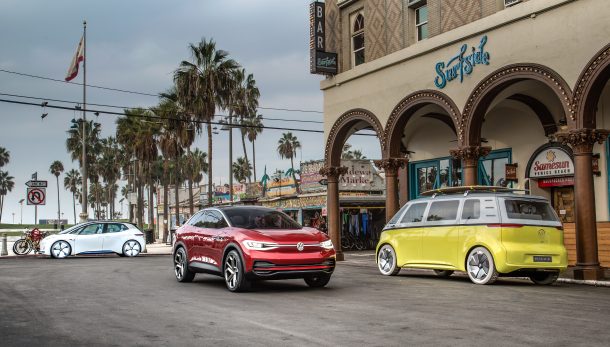





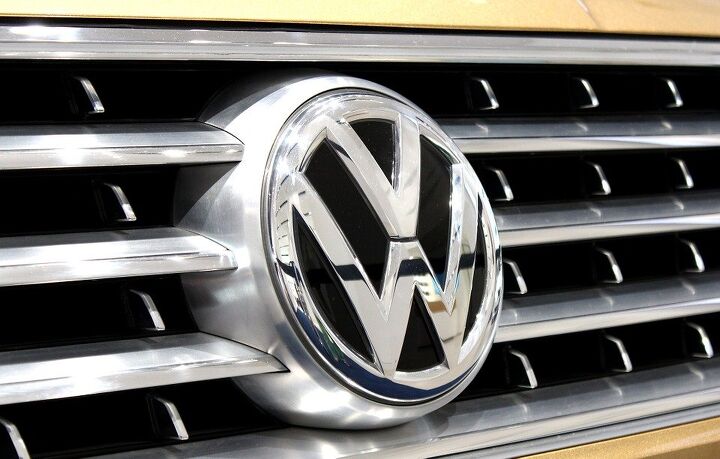
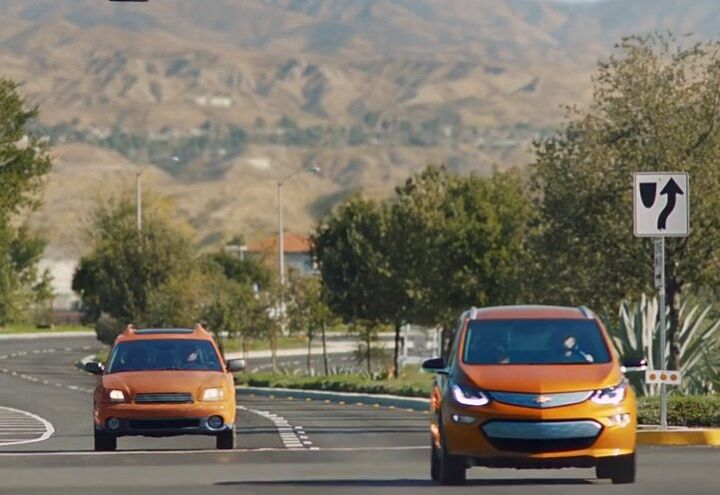

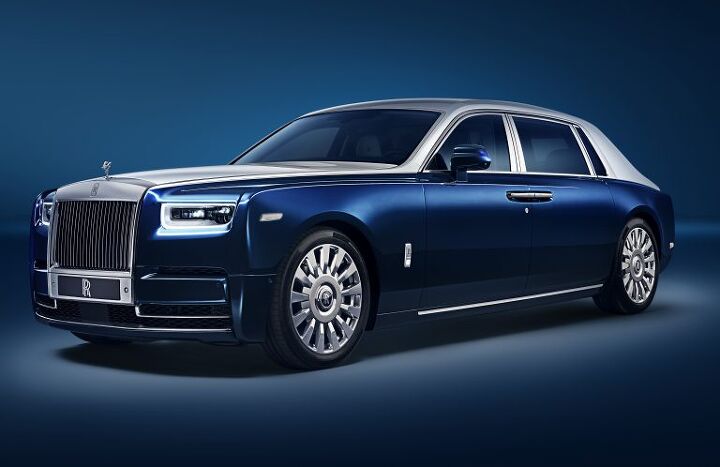







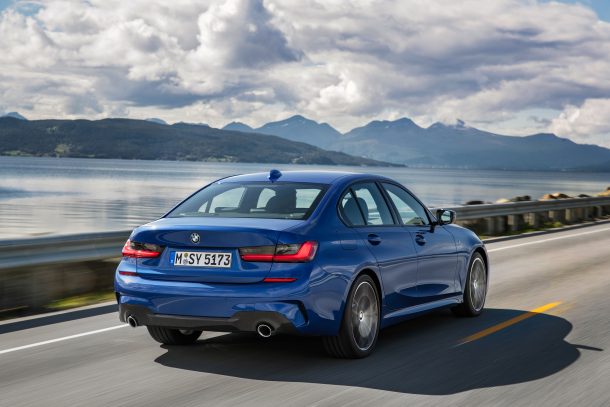
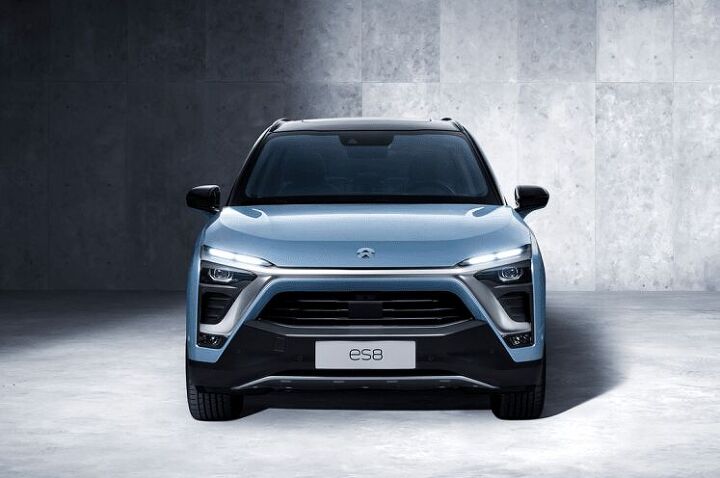
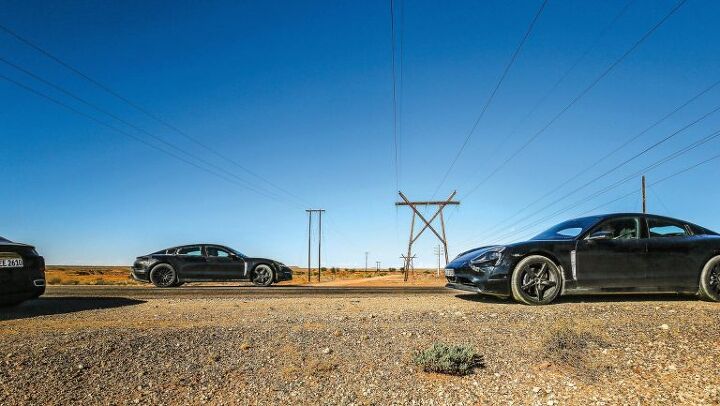


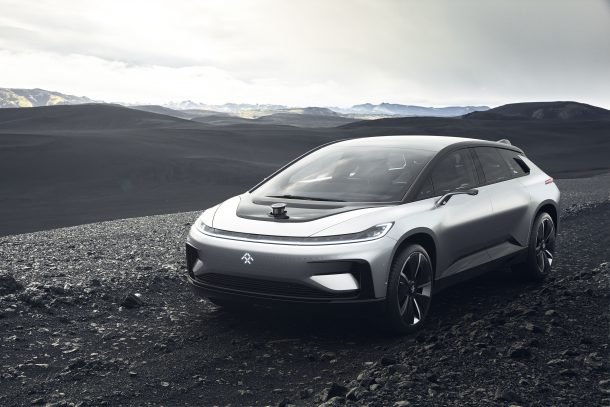

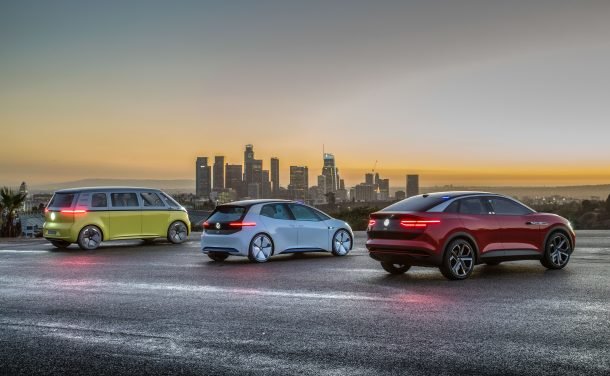

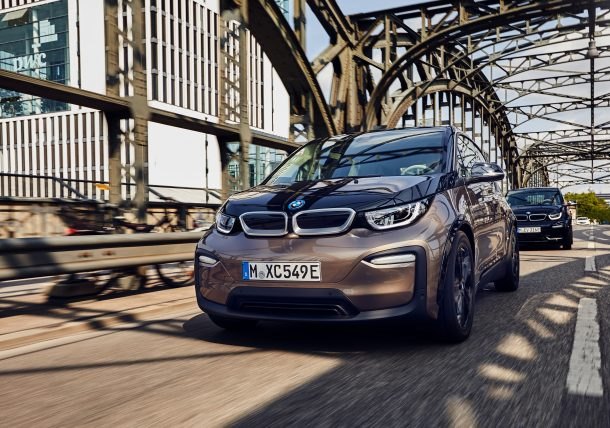
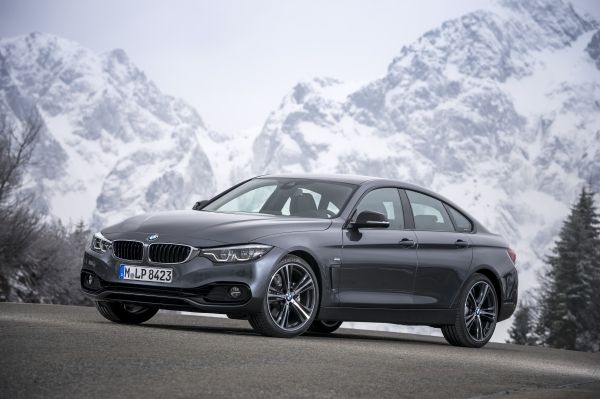




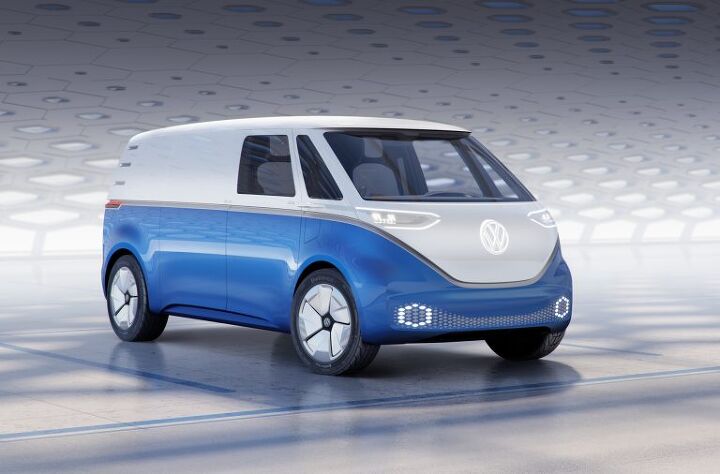
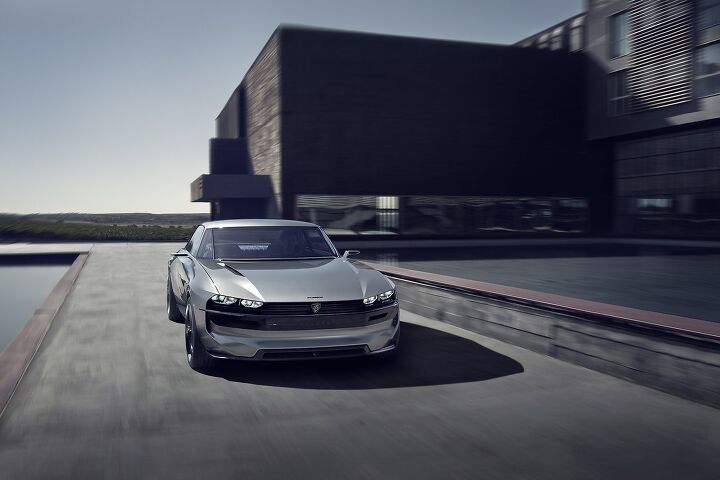


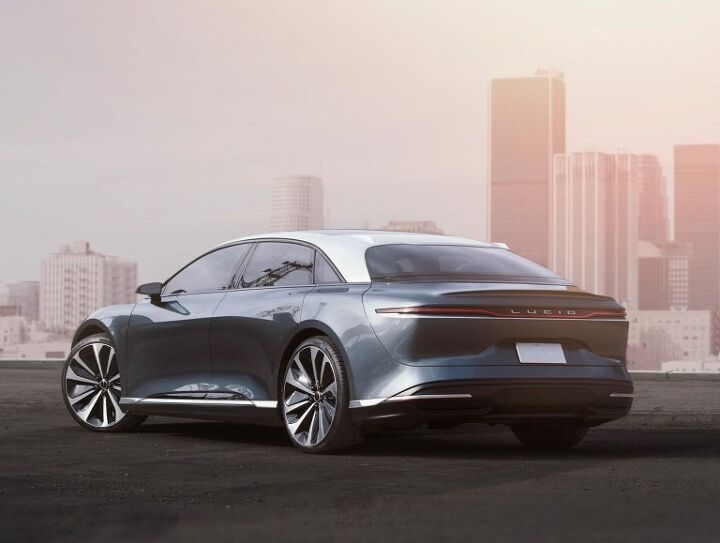
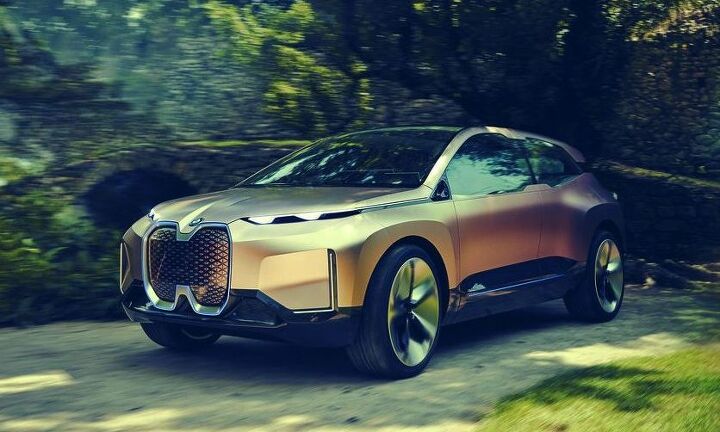



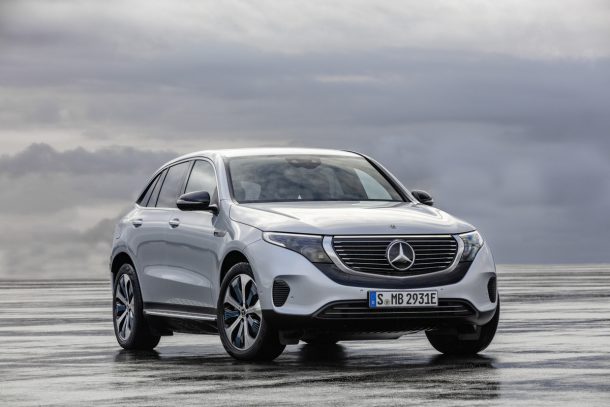



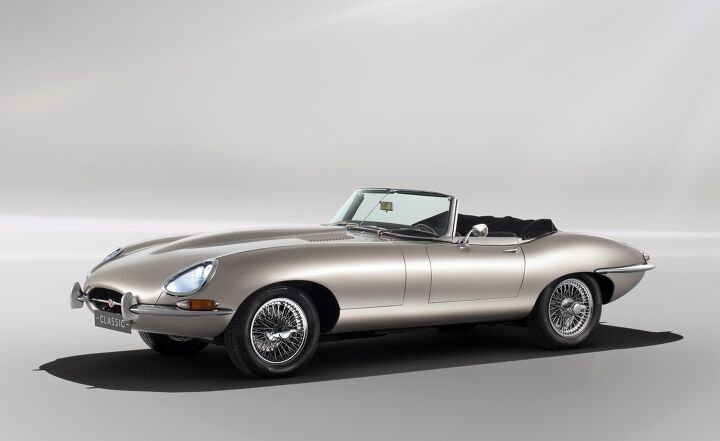
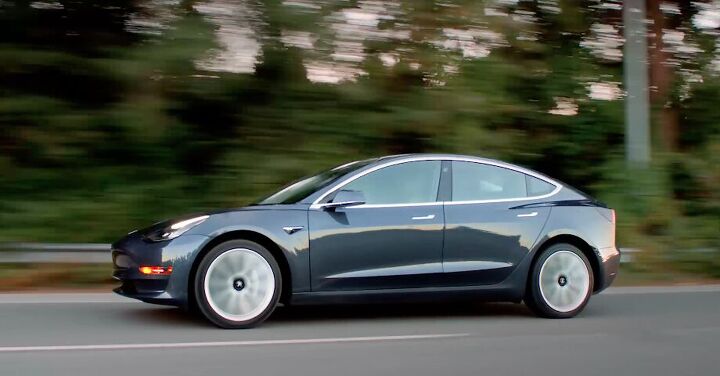

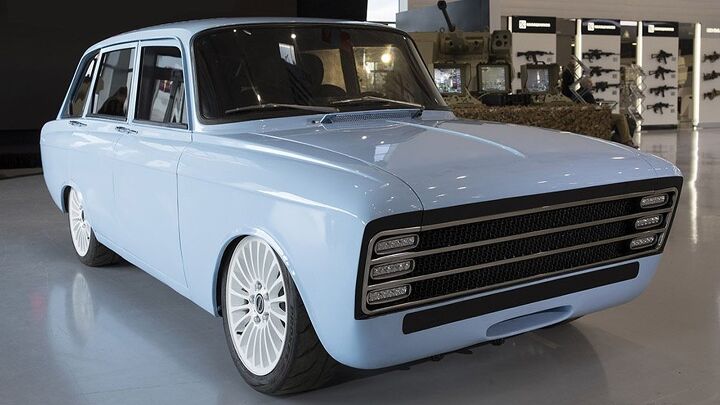















Recent Comments